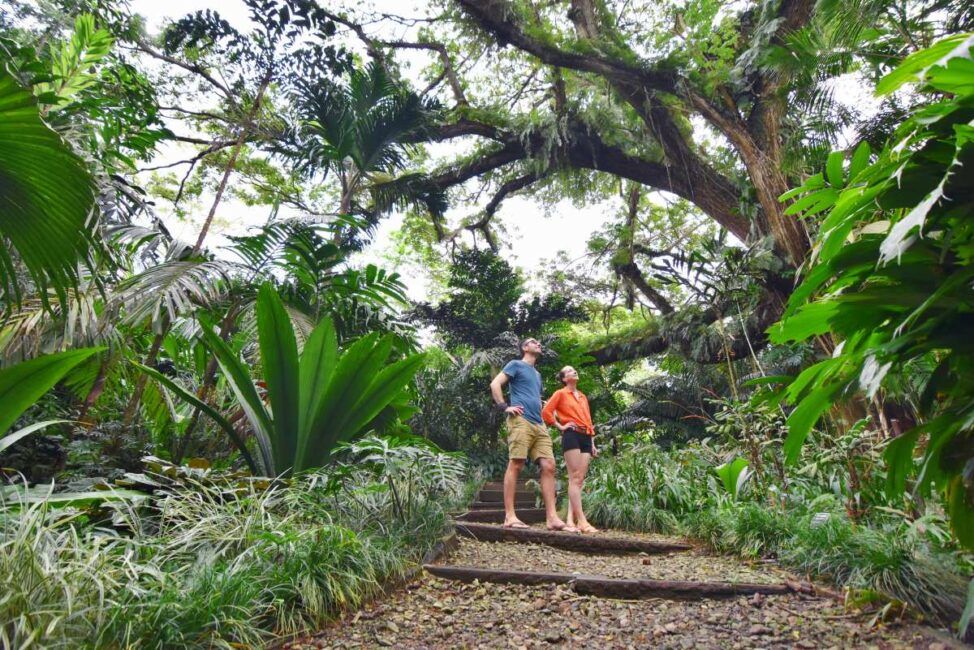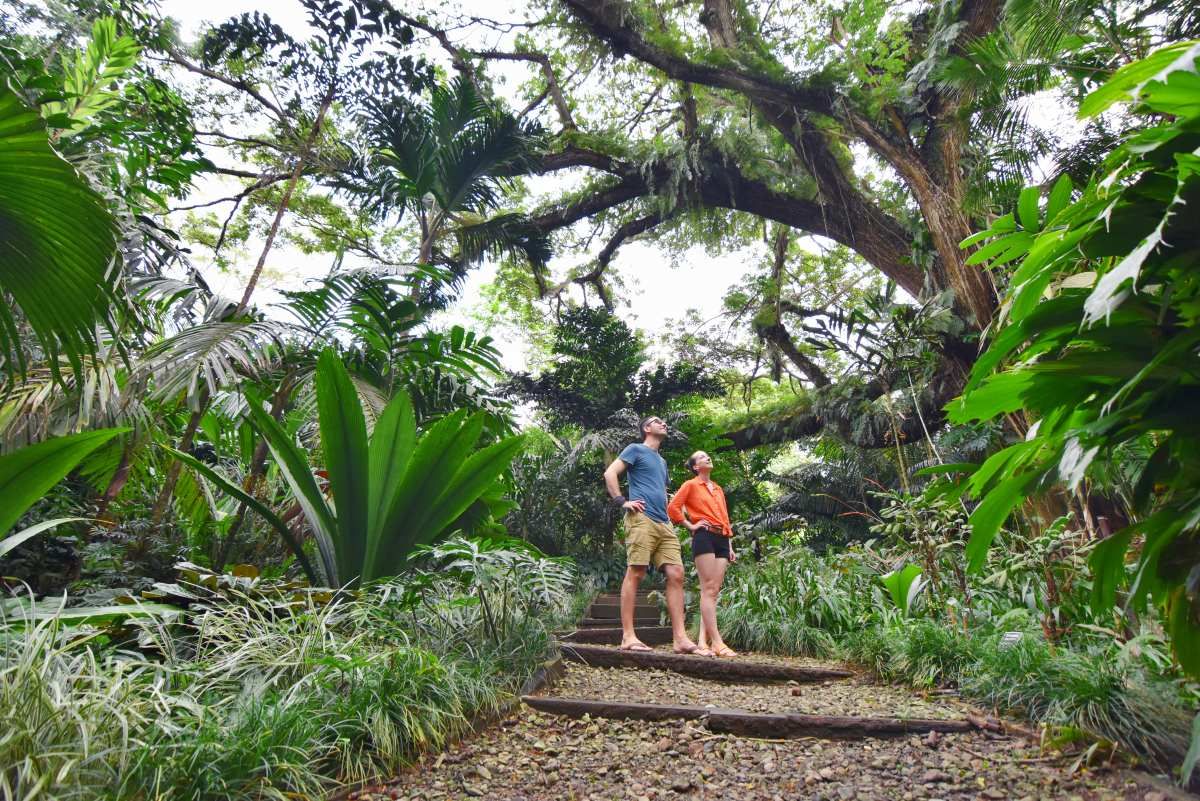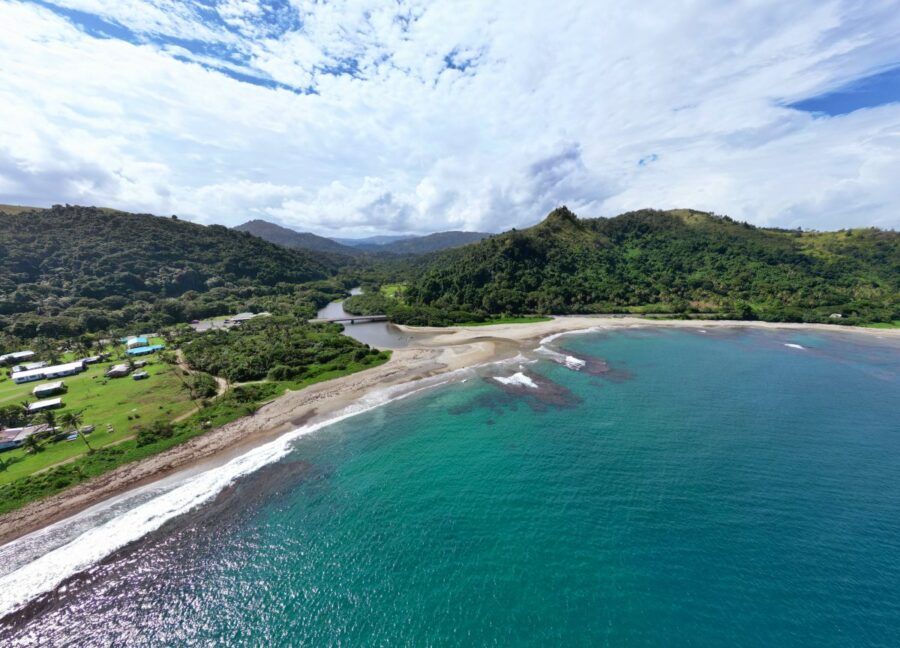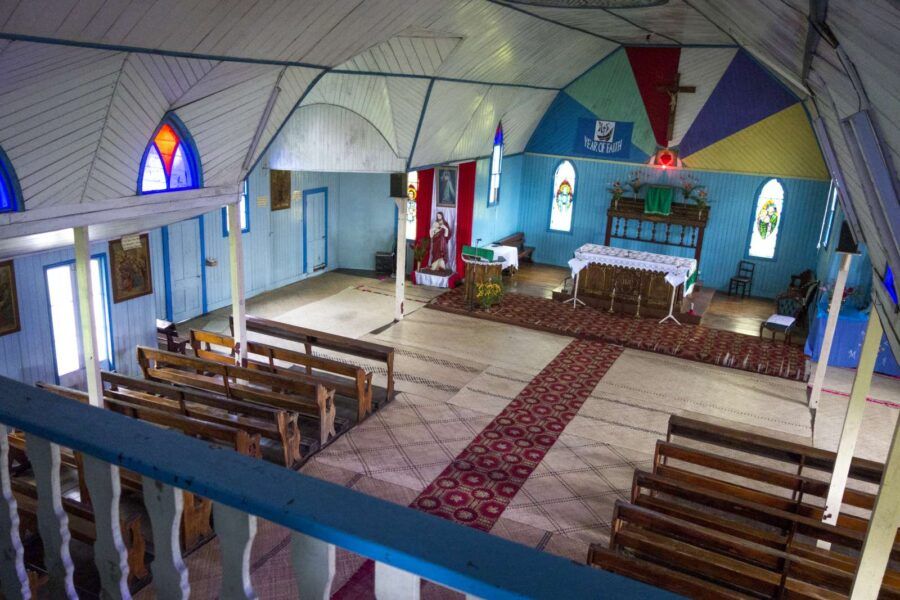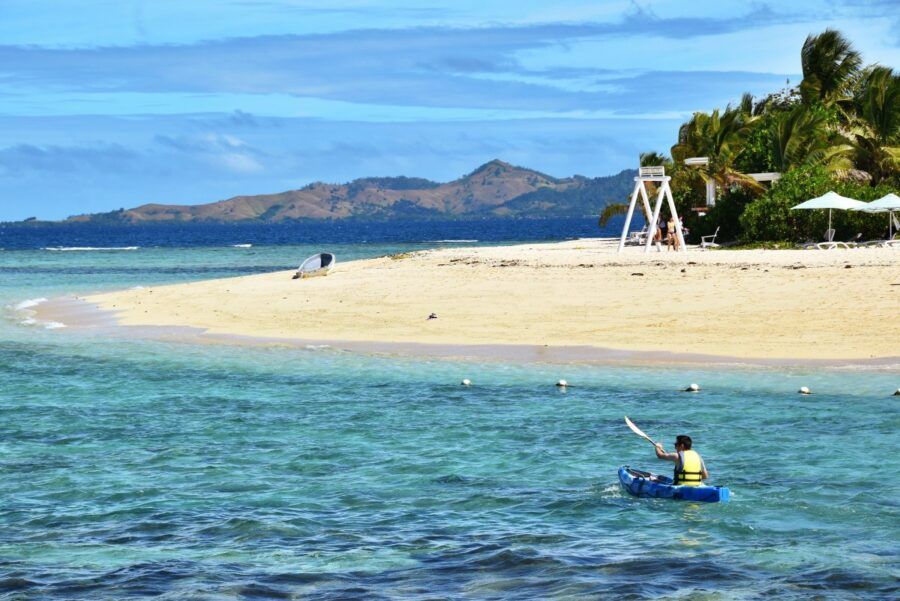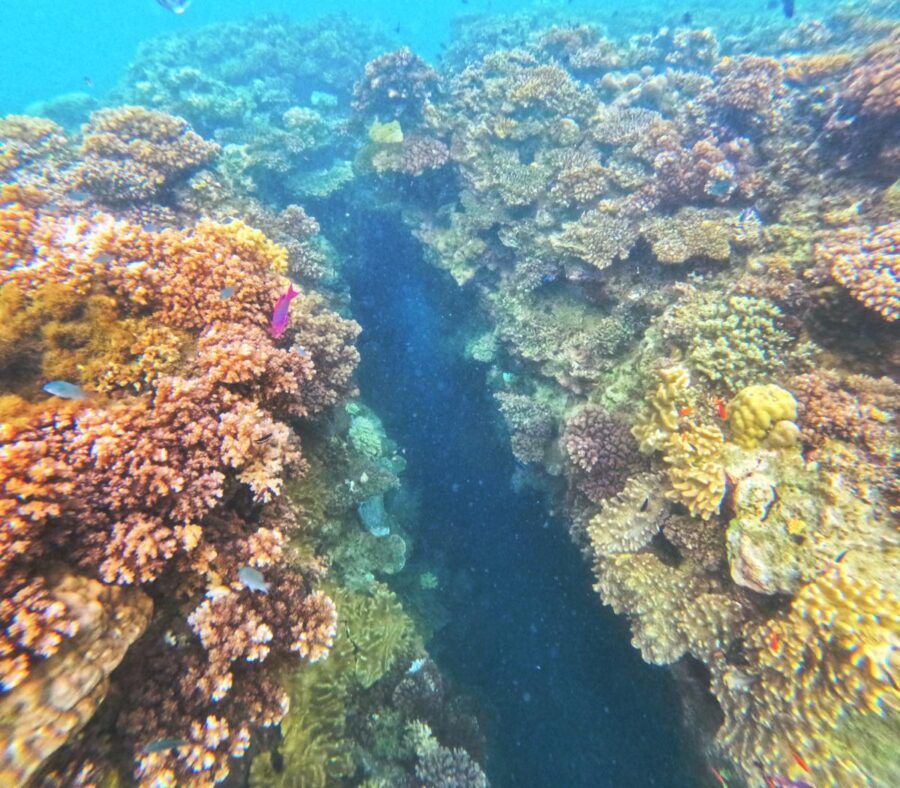Our Favourite Free (or Cheap) Activities on Vanua Levu
We get it, not every day can involve an expensive scuba dive, game fishing charter or helicopter flight… Luckily, Vanua Levu is extremely budget-friendly, from cheap transport around the island to free (or cheap) attractions along the way. The towns of Savusavu and Labasa each have their own set of inexpensive attractions, while many of the resorts have complimentary activities to keep you entertained in paradise. We’ll go through some examples with this list of free and cheap things to do on Vanua Levu!
While you’re here, you might also like The Budget & Backpacking Guide to Vanua Levu. Note that many of the activities suggested pair well with a stay in the 10 Best Budget Accommodations on Vanua Levu.
Table of Contents
1. Snorkel at Split Rock – FREE
If you know anything about Fiji, then this one will be no surprise to you, but it’s a fun and cheap thing to do nonetheless! Vanua Levu is blessed with a wealth of amazing snorkelling spots, from marine reserves to vast coral reefs. While many resorts offer snorkelling as a complimentary activity by providing masks and snorkels, if you have your own gear and are looking for your own snorkelling adventure then we recommend Split Rock. Split Rock offers some of the best snorkelling in Savusavu Bay. Colourful reef fish such as clownfish, sergeant fish, damsels, clams, grouper and parrotfish can all be seen here.
Location: Lesiaceva Road, opposite road post No.63. A white buoy marks the spot. Approximately 6 km (4 mi) west of Savusavu town.
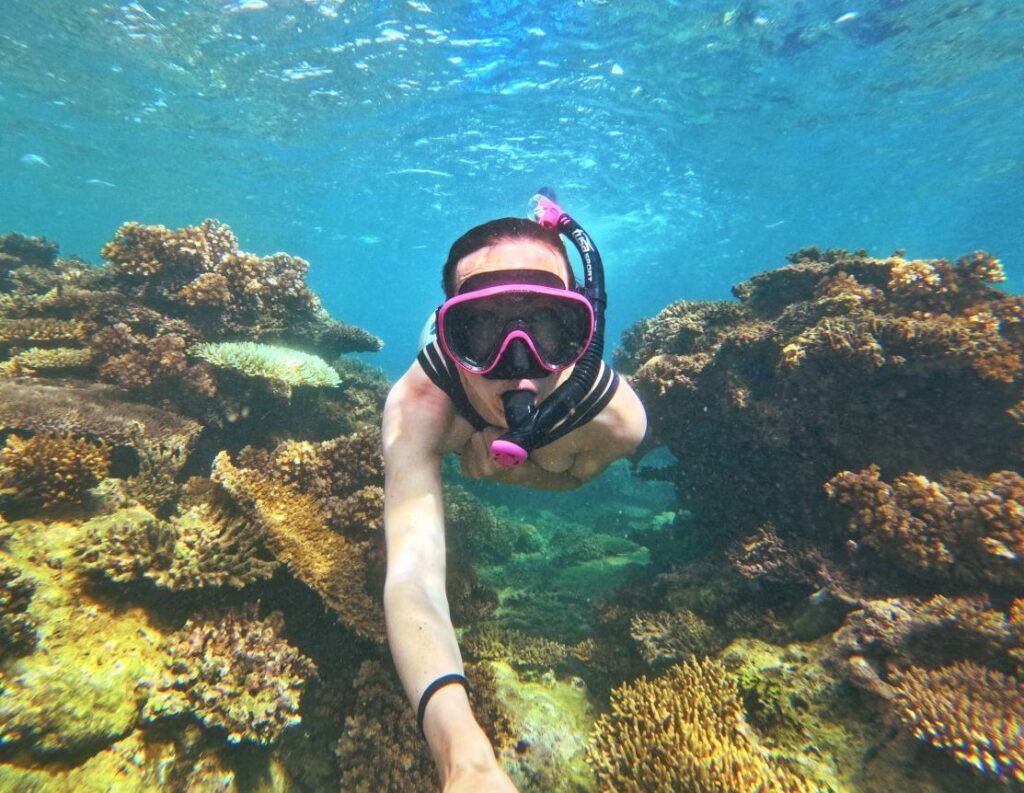 © FijiPocketGuide.com
© FijiPocketGuide.com2. Discover the Sacred Red Prawns of Naweni – FREE/CHEAP
Get ready to experience a unique cultural phenomenon in Fiji – the Sacred Red Prawns of Naweni! These rare creatures are found in only a few locations in Fiji and hold significant spiritual importance for the local Fijians. Legend has it that two ladies from Vuna-Taveuni were having a picnic on the beach when a storm brought two prawns and mosquitos. A big wave swept the ladies away, carrying the prawns to a nearby pool. After weeks of prayer, the prawns miraculously came to life – and this legend continues to this day. Due to their sacred status, locals believe these prawns should not be touched, consumed or even pointed at. Instead, you can observe them in their natural habitat and learn about their cultural significance. Donations are accepted, but there’s no pressure to pay. Bring walking shoes to make your way through the diverse terrain of beach, forest, reef and mangrove swamps to access this unique site.
Location: Hibiscus Highway, Naweni. Tours can be arranged with resorts like Daku Fiji Resort and La Dolce Vita. Approximately 32 km (20 mi) east of Savusavu town.
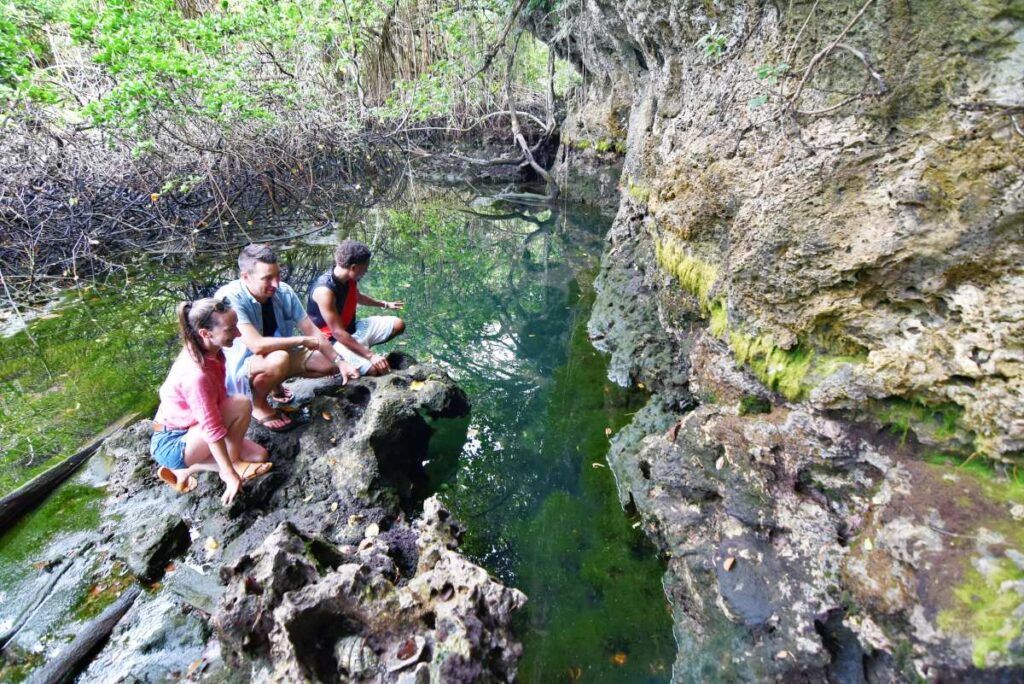 © FijiPocketGuide.com
© FijiPocketGuide.com3. Get Out on the Water on a Kayak or Stand-Up Paddleboard – FREE/CHEAP
Glide peacefully across crystal clear waters and up close to coral reefs by hiring a kayak or a stand-up paddleboard. Pretty much all of the mid-range and luxury resorts on Vanua Levu offer complimentary use of watersports equipment, while only a select few budget accommodations have kayaks and paddleboards available. Hire two kayaks for around FJ$10 a day at the Sigasiga Sands Boutique Bungalows or enjoy complimentary use of kayaks at Daku Fiji Resort to explore Savusavu Bay.
Location: Sigasiga Sands – Hibiscus Highway, Savusava. Daku Resort – Lesiaceva Road, Savusavu.
 © photoeverywhere.co.uk
© photoeverywhere.co.uk4. Visit the Vuadomo Village and Waterfall – CHEAP
Chasing waterfalls and cultural village visits come hand-in-hand in Fiji, as you can experience it in several locations on Viti Levu, Taveuni, and right here on Vanua Levu. One of the popular waterfall experiences on Vanua Levu is the Vuadomo Village and Waterfall. Located along the Cross Island Road, between Savusavu and Labasa, Vuadomo Village holds an amazing spot for swimming and taking stunning photos. Pick up some kava from the market to gift as a “sevusevu” to the village chief, along with an FJ$25 donation for one of the villagers to take you on a tour of the impressive waterfall. Alternatively, you can book a visit via the Muanivatu Trails website or visit with a guided tour for your tour guide to go through the customs on your behalf.
Location: Vuadomo Village, Savusavu Bay, Vanua Levu. From Savusavu, take Cross Island Road past the village of Jerusalemi and turn onto Vuadomo Road. Follow the dirt road for about 2 km (1 mi) until you reach the village.
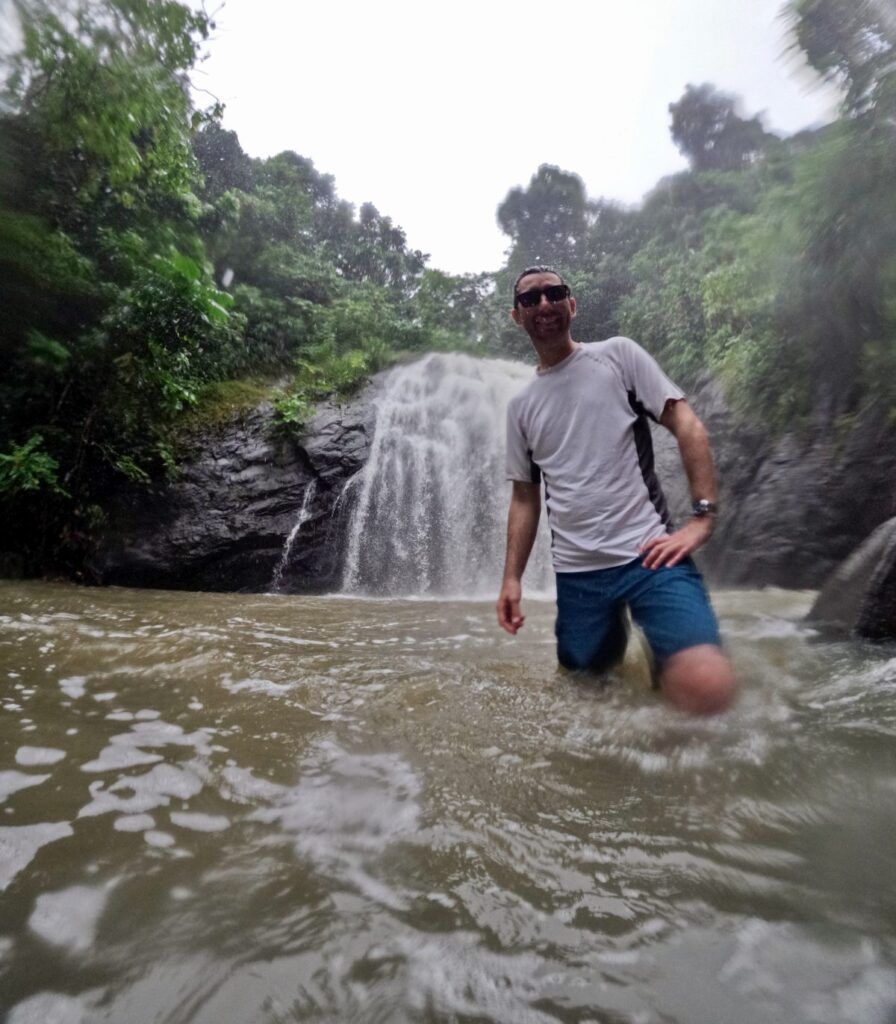 © FijiPocketGuide.com
© FijiPocketGuide.com5. Check Out the Flora Tropica Garden – CHEAP
Just a short drive from Savusavu, see a gorgeous garden filled with more than 300 types of palms and countless tropical flowers. The Flora Tropica Gardens is a botanical paradise boasting over 250 palm species from around the globe. As you meander along gravel pathways and elevated boardwalks, you’ll discover a tranquil lily pond, winding trails with stunning vistas of Savusavu Bay, and an abundance of tropical flora. The garden showcases flowering trees, shrubs, orchids, and more than 40 types of tropical fruit trees. You’ll find serene rest areas perfect for soaking in the surroundings. Most visitors spend about 2 hours exploring this meticulously curated plant haven.
Location: Daku Road (just off Lesiaceva Road), 5 km (3 mi) southwest of Savusavu town centre. Open by appointment; simply call the number on the entrance gate sign.
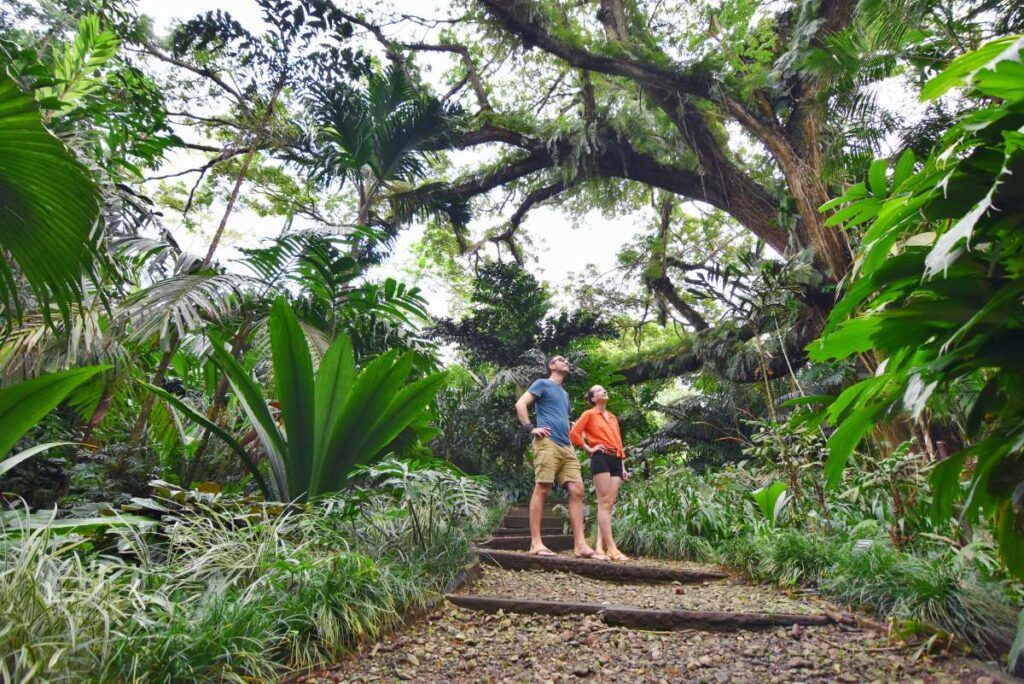 © FijiPocketGuide.com
© FijiPocketGuide.com6. Enjoy a Nature Walk or Two – FREE/CHEAP
Vanua Levu has no lack of gorgeous places to stretch your legs. Popular walks include the Muanivatu Trails for a mix of village, beach, forest and vistas (a fee of approximately FJ$25 applies). Budget resorts also offer walks straight from the resort, such as the magnificent jungle walk to a mountain peak from Daku Fiji Resort. Sigasiga Sands Boutique Bungalows also has several bushwalks through 40 ha (99 acres) of forest. Ask your accommodation provider for the best places to take a walk nearby or check out the 10 Best Walks in Savusavu & Vanua Levu.
Location: Muanivatu Trails – Vuadomo Village, Savusavu Bay. Daku Resort – Lesiaceva Road, Savusavu. Sigasiga Sands – Hibiscus Highway, Savusavu. More recommendations and their locations are linked above.
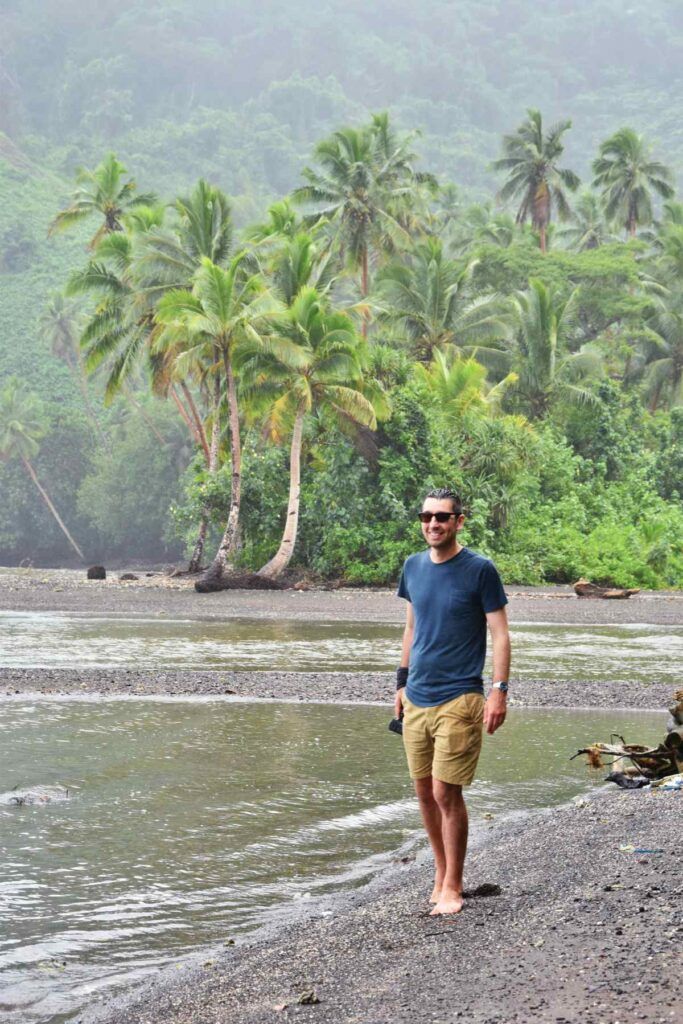 © FijiPocketGuide.com
© FijiPocketGuide.com7. Check Out a Giant Snakehead – FREE
Ok, so it literally isn’t a giant snake but a giant rock formation with the likeness of Naag Baba. The stone snake with a temple built around it is an attraction of religious devotees from all over the world. The rock formation in the Naag Mandir Temple is culturally significant to the local Indo-Fijian people decorated in colourful leis and other decorations. After paying a visit to Naag, there is the option to walk the 108 steps leading to the main Yagan Havan. For more cheap experiences in Vanua Levu’s northern town, check out the 6 Best Things to Do in Labasa.
Location: Wainikoro Road, approximately 14 km (8.6 mi) from Labasa.
 © Pexels
© Pexels8. See the Island’s Hot Springs – FREE
Vanua Levu is a hotbed for hot spring activity, with the most famous hot springs being the Nakama Hot Springs. While you may notice steam rising near the wharf at Savusavu Bay, it’s far too hot to bathe in it. Instead, head to the Nakama Hot Springs, located just across the road from the Savusavu Hot Springs Hotel. You might be lucky enough to see locals using the hot springs for cooking. Otherwise, the picnic areas and information panels provide plenty of other ways to enjoy your time at this natural wonder. If you really are in search of every hot spring in Fiji, then hop on the Waiqele bus to the Waiqele Hot Springs near Labasa Airport.
Location: Nakama Hot Springs – Nakama Road, Savusavu. Behind the Max Value store and across the road from the Savusavu Hot Springs Hotel. Waiqele Hot Springs – Waiqele, approximately 3 km (1.9 mi) from Labasa Airport.
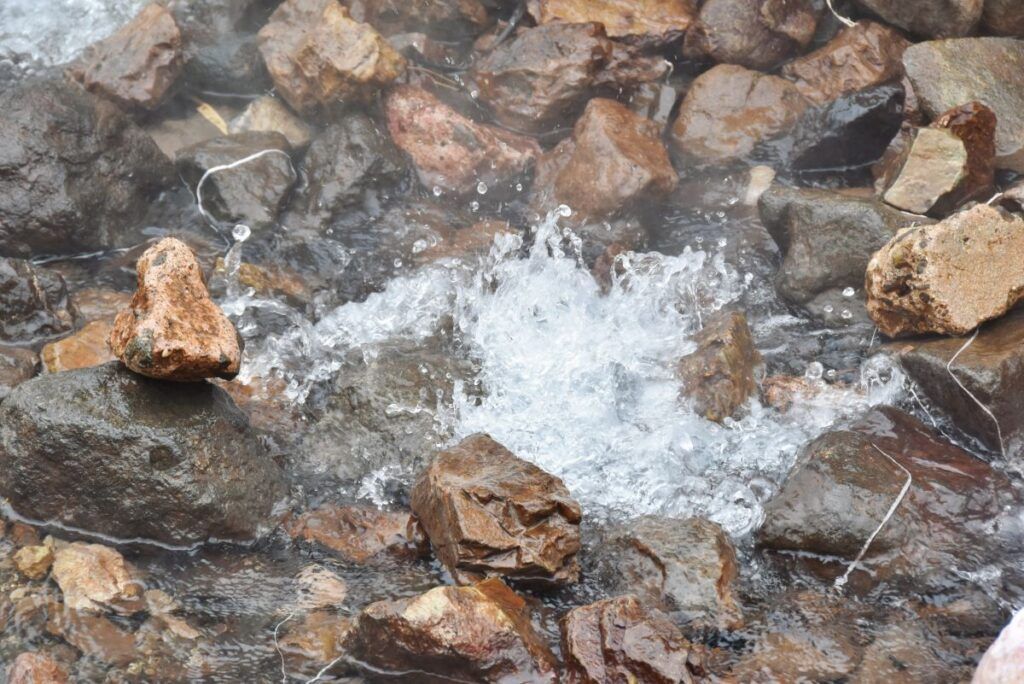 © FijiPocketGuide.com
© FijiPocketGuide.com9. Learn How to Husk a Coconut – FREE
You could try to do this yourself and spend ages trying to husk a coconut if you don’t know what you’re doing. With a bit of instruction, you’ll be able to survive if you’re ever marooned on an island! Many of Vanua Levu’s resorts are among coconut (copra) plantations where staff are often happy to show you how to husk a coconut (they get asked all the time – trust us). If you’re staying at the budget Sigasiga Sands, ask the staff how they make coconut milk, oil, chutney, brooms, snacks and mats from their coconut plantation.
Location: Sigasiga Sands – Hibiscus Highway, Savusavu.
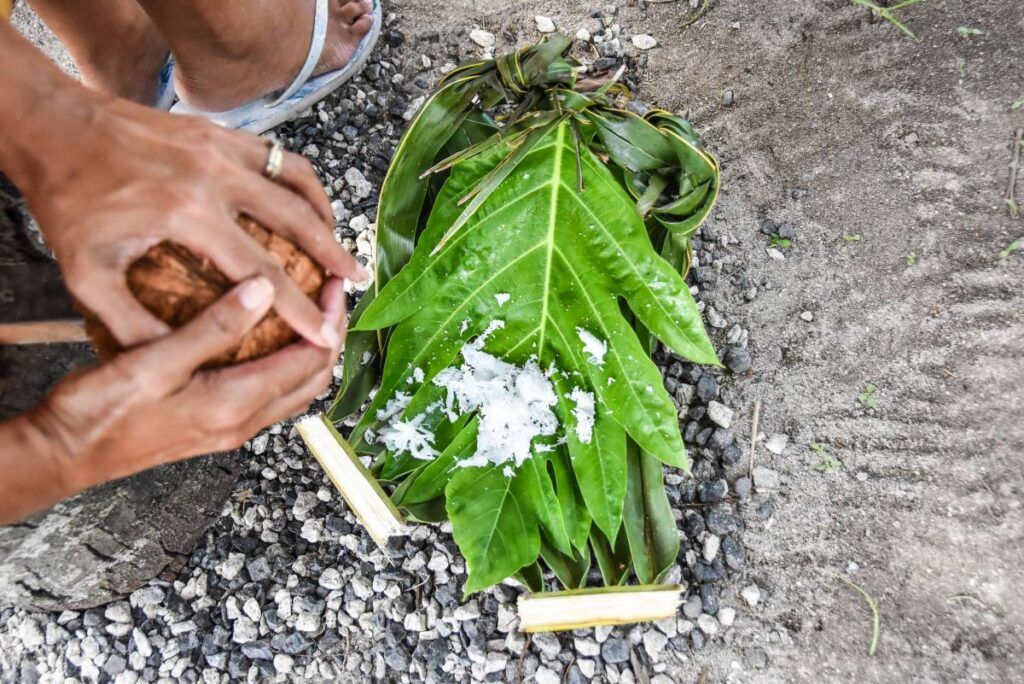 © FijiPocketGuide.com
© FijiPocketGuide.com10. Take Part in a Cooking Class – FREE/CHEAP
An inexpensive (and often free) cultural activity available at many of the resorts around Vanua Levu is a Fijian or an Indo-Fijian cooking class. Budget accommodation that offers these hands-on activities include Sigasiga Sands where the resident chef is happy to show you how to prepare Fijian or Hindi Cuisine. Over at the Dolphin Bay Divers Retreat, the team there offer complimentary instruction on how to prepare a traditional “lovo” – food cooked underground. Needless to say, you’ll tick off plenty of the 10 Unique Foods in Fiji You Have to Try.
Location: Sigasiga Sands – Hibiscus Highway, Savusavu. Dolphin Bay Diver’s Retreat – Viani Bay, eastern side of Vanua Levu.
 © FijiPocketGuide.com
© FijiPocketGuide.com11. Indulge in the Local Cheap Eats
Speaking of food, Labasa, Savusavu and even some of the budget resorts have fantastic food and a fantastic price. One of the famed cheap eats in Savusavu is Arun’s Taste of Hidden Paradise Restaurant serving up Chinese stir-fries, Indian curries, burgers and Thai food for less than FJ$15. Mum’s Country Kitchen in Savusavu is another fantastic option to indulge in local dishes for under FJ$10 including hearty chicken curry rice, roti parcels, and classic egg sandwiches. Over the hill in Labasa, The Banana Leaf Restaurant serves up a good choice of Indian curries with roti for around FJ$10 each. For more recommendations, see our Top Cheap Eats on Vanua Levu.
Location: See the link above for recommendations and their locations.
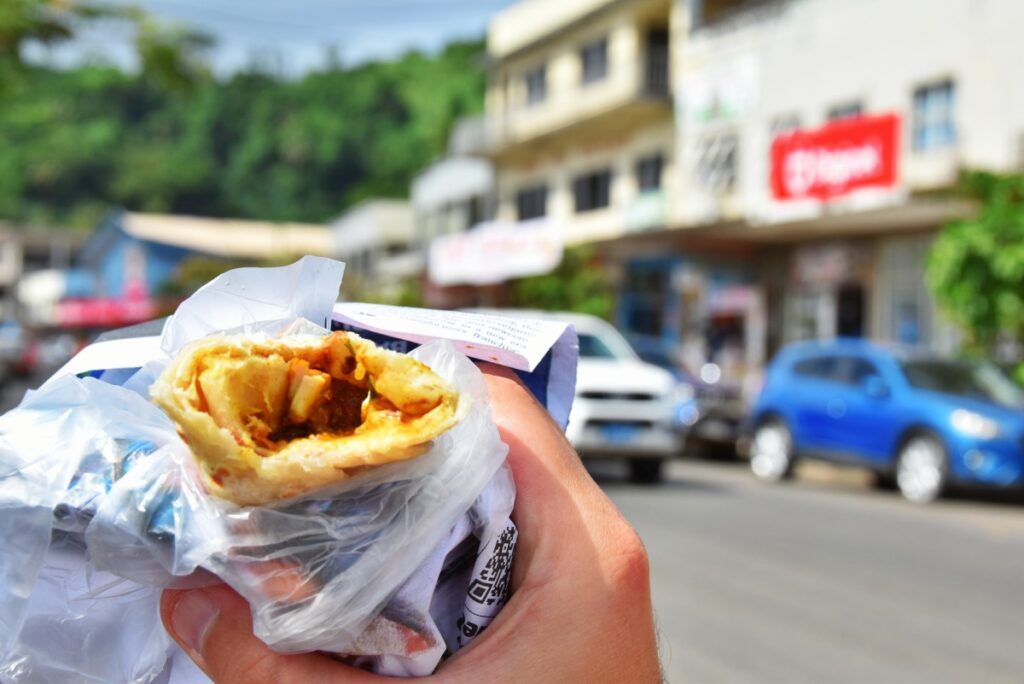 © FijiPocketGuide.com
© FijiPocketGuide.comMore Free and Cheap Things to Do in Vanua Levu and Fiji
That’s it for the free and cheap things to do on Vanua Levu. For more ways to experience Fiji’s hidden paradise, check out more of our insightful guides:
- 20 Best Things to Do in Vanua Levu
- 10 Best Things to Do in Savusavu
- 17 Ways to Save Money When Travelling in Fiji
Don’t forget to bookmark The Complete Travel Guide to Fiji on a Budget. Trust us, there’s a lot of useful tips in there!
Sources:
The information in this guide has been compiled from our extensive research, travel and experiences across Fiji and the South Pacific, accumulated over more than a decade of numerous visits to each destination. Additional sources for this guide include the following:
- Savusavu Tourism Association (Regional tourism website)
- Tourism Fiji (General travel advice - Updated [2025])
- Fiji Hotel and Tourism Association (Tourism trade association - Updated [2025])
- SPTO (Pacific tourism advice - Updated [2025])
- Fiji Immigration (Visa and immigration advice - Updated [2025])
- Fiji Revenue & Customs Service (Customs and visitor taxes - Updated [2025])
- Biosecurity Authority of Fiji (Biosecurity advice - Updated [2025])
- Fiji Meteorological Service (Weather forecast and warnings - Updated [2025])
- Fiji Bureau of Statistics (Statistics and travel data - Updated [2025])
- Ministry of Tourism and Civil Aviation (Tourism statistics - Updated [2025])
- Land Transport Authority (Road safety advice - Updated [2025])
- Safe Travel (New Zealand travel advisory for Fiji - Updated [2025])
- Smart Traveller (Australia travel advisory for Fiji - Updated [2025])
- Travel.State.Gov (U.S. travel advisory for Fiji - Updated [2025])
- Savusavu Tourism Association (Regional tourism website)
Our editorial standards: At Fiji Pocket Guide, we uphold strict editorial standards to ensure accurate and quality content.

About The Author
Laura (Lora) S.
This article was reviewed and published by Laura, editor in chief and co-founder of Fiji Pocket Guide. Since arriving solo in the South Pacific over 10 years ago with nothing but a backpack and a background in journalism, her mission has been to show the world how easy (and awesome) it is to explore a paradise such as Fiji. She knows the islands inside-out and loves sharing tips on how best to experience Fiji’s must-dos and hidden gems. Laura is also editor of several other South Pacific travel guides.
